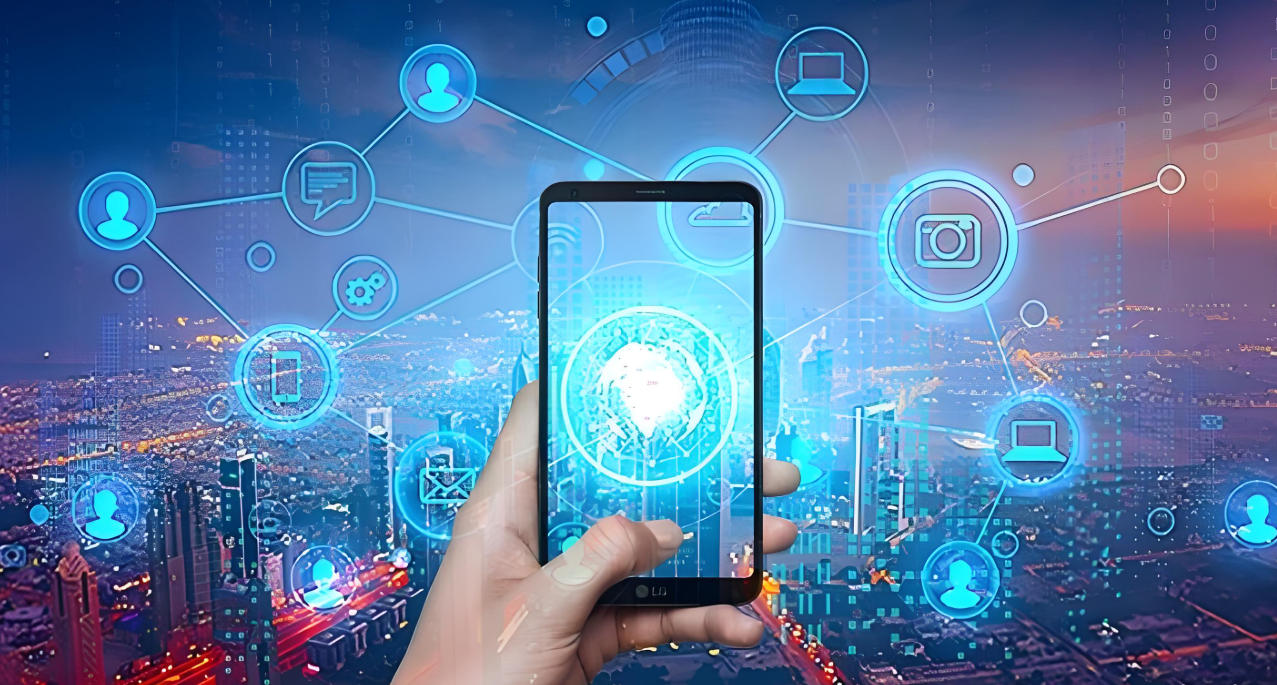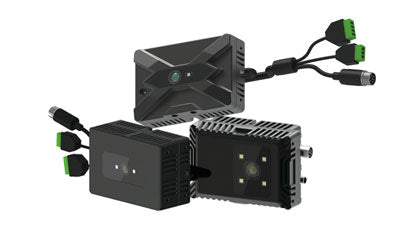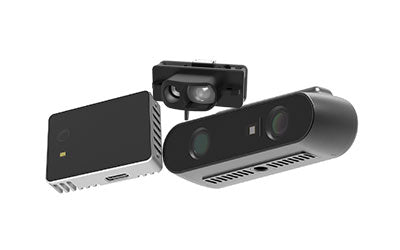Rise of TOF Cameras in Smartphones: 3D Sensing Redefines Interaction
- por TofSensor

With the continuous advancement of smartphone technology, users’ demands for interaction experiences are steadily increasing. TOF (Time-of-Flight) cameras, as a new generation of depth-sensing sensors, are quietly transforming the way we use smartphones. From precise facial recognition to immersive AR applications, TOF technology is leading the new trend in 3D perception for mobile devices. This article will provide a comprehensive analysis of TOF applications in smartphones and their future development trends.
What is the Difference Between Accuracy and Precision? Accuracy vs Precision Examples in TOF Applications
Accuracy vs Precision are key concepts in measurement and 3D sensing, especially for smartphone TOF cameras.
-
Accuracy measures how close a value is to the true measurement. For example, if a TOF camera measures the distance to a table as 100 cm and the actual distance is 100 cm, the measurement is highly accurate.
-
Precision measures the consistency or repeatability of measurements. If the TOF camera repeatedly measures 95 cm for the same distance, the results are consistent, showing high precision even if the accuracy is slightly off.
Examples of Accuracy and Precision in TOF Applications:
-
High Accuracy + High Precision → AR objects are stable and match real-world positions.
-
High Accuracy + Low Precision → AR objects drift but average position is near reality.
-
Low Accuracy + High Precision → AR objects are stable but misaligned.
-
Low Accuracy + Low Precision → AR objects are unstable and jittery.
Calculation of Accuracy and Precision is essential for evaluating TOF sensors. High accuracy and precision improve AR placement, depth perception, and facial recognition. Understanding the difference between accuracy and precision, accuracy vs precision definition, and accuracy versus precision ensures reliable 3D sensing.
1. The Development and Current Status of TOF Technology in Smartphones
TOF (Time-of-Flight) technology was initially applied in industrial fields such as autonomous driving, robotic distance measurement, and 3D scanning. With the miniaturization of sensors and cost reduction, it gradually entered the consumer market. Smartphones have become a key application area for TOF technology, mainly enhancing photography, AR experiences, and biometric recognition accuracy.
As early as 2017, some flagship smartphones began experimenting with TOF cameras, marking the entry of 3D sensing into the consumer market. For example, the Huawei Mate 20 Pro introduced a TOF depth camera, enabling more accurate face unlock and 3D photography. Apple, on the other hand, combined Face ID with LiDAR scanning in the iPhone X and subsequent models, delivering industry-leading 3D sensing experiences. Today, TOF cameras have become a crucial technology for smartphone manufacturers to differentiate themselves in a competitive market.
2. How TOF Enables Precise 3D Face Recognition and Payment Security
Traditional 2D face recognition relies on front-facing cameras capturing flat images and comparing facial feature points. This method can fail or be deceived under poor lighting, angle deviations, or photo/mask spoofing, posing risks in high-security scenarios like payments and identity verification.
In contrast, TOF cameras emit infrared light and measure the time it takes for the light to return, quickly generating high-precision depth maps and reconstructing real 3D facial models. This approach allows smartphones to capture not only 2D facial features but also depth, contours, and surface details, achieving full 3D modeling. This significantly enhances recognition accuracy and allows the system to distinguish between real faces and spoofing attempts, improving payment security.
In practice, TOF cameras can complete 3D face scans in milliseconds, and when combined with AI algorithms for liveness detection, micro facial movements, blood flow, and skin reflection patterns are analyzed to confirm the user is a real person. This dual-layer security greatly reduces account theft and payment fraud, while improving facial recognition reliability.
TOF technology also excels in low-light environments. Traditional cameras often require additional illumination or longer exposure in dark conditions, whereas TOF uses infrared light for measurement, unaffected by visible light conditions, ensuring accurate face recognition for night payments, device unlocking, or other security operations.
Furthermore, TOF combined with AI supports multi-angle recognition and dynamic tracking. Even when users wear masks, hats, or slightly tilt their heads, the system can still quickly verify identity. As AI algorithms continue to evolve, TOF cameras will enable more intelligent face recognition, such as analyzing expressions to infer emotions or integrating multiple biometric features for multi-modal authentication, providing comprehensive security for mobile payments and high-security applications.
3. Enhancing AR/VR Experiences: TOF-Based Spatial Modeling and Gesture Recognition
TOF technology provides precise spatial perception for AR/VR applications. Unlike traditional cameras capturing only flat images, TOF cameras measure the flight time of light to generate high-precision depth maps, allowing real-time perception of surrounding environments. Using this depth information, smartphones can accurately construct 3D spatial models for indoor or outdoor spaces, providing more immersive and natural virtual experiences.
-
Virtual Try-On and Home Layout: With TOF depth sensing, smartphones can scan a user’s body and surrounding environment, enabling virtual clothing try-ons or furniture placement previews. For instance, when using AR apps to visualize furniture in a room, the TOF camera accurately calculates distances and proportions, making virtual objects align perfectly with the real environment and enhancing realism in shopping or interior design.
-
Gesture Recognition and Interaction: TOF captures 3D hand motion data for touchless operation. Users can swipe, scroll, rotate 3D models, or perform actions in AR games without touching the screen. Combined with AI algorithms, systems can recognize complex gestures, including combinations, grabbing, or waving, delivering natural and intuitive human-computer interaction.
-
3D Modeling and Content Creation: For digital content creators, TOF simplifies 3D modeling. Simply capturing an object with a smartphone allows the TOF camera to generate high-precision 3D models with texture and spatial information, usable in games, animations, virtual exhibitions, or social media. This lowers the barrier for professional-level content creation on mobile devices.
Additionally, TOF can continuously update environmental depth information, enabling dynamic spatial perception. In multi-user AR interactions, virtual meetings, or indoor navigation, TOF cameras can track object and user movements to maintain alignment between virtual and real-world objects. In AR/VR applications, TOF enhances immersion while making interactions smarter and smoother.
In summary, with TOF technology, smartphones evolve beyond photography tools into intelligent devices capable of spatial perception, enabling immersive experiences and innovative interactions that transform human-device interaction.
4. Comparison of TOF Applications Across Major Smartphone Brands (Apple, Huawei, Xiaomi)
Different manufacturers adopt distinct strategies for TOF technology:
-
Apple: Combines Face ID with LiDAR scanning, enabling secure 3D face recognition and AR applications like virtual home layout and augmented reality gaming.
-
Huawei: Uses 3D depth cameras for face unlock, 3D portrait photography, AR measurement tools, and virtual try-on applications.
-
Xiaomi: Employs TOF cameras to enhance AR experiences, including AR games, spatial measurements, and gesture control.
In comparison, Apple focuses on security and AR ecosystem integration, Huawei emphasizes imaging and multi-scenario applications, while Xiaomi prioritizes AR entertainment experiences.
5. Future Trends: TOF + AI for Intelligent Interaction
As technology evolves, TOF cameras will integrate deeply with AI, providing smartphones with enhanced environmental perception and intelligent interaction. By combining multi-modal sensing with AI algorithms, smartphones can not only recognize faces precisely but also understand spatial environments, predict user behavior, and respond intelligently, delivering natural and intuitive human-computer interaction.
-
Smart Home Control: TOF + AI enables gesture or motion control of household appliances. Users can adjust lighting, control TVs, or set air conditioning temperatures with a wave of a hand, without touching the screen or using voice commands. AI learns user habits to optimize actions, like automatically adjusting lighting or audio, creating a personalized smart home experience.
-
Enhanced AR Experiences: AI algorithms analyze depth information captured by TOF cameras to recognize room layouts, furniture positions, and spatial dimensions. Smartphones can accurately overlay virtual objects in real environments, such as furniture placement, AR game characters, or navigation cues. AI-driven environmental understanding makes AR experiences more realistic and interactive.
-
Health and Fitness Monitoring: TOF + AI enables 3D body scanning and motion recognition for personalized fitness guidance. The system can track posture, gait, joint angles, and movement trajectories, providing real-time feedback. TOF can also support health monitoring, analyzing breathing rates, sitting posture, and activity levels, offering comprehensive wellness management.
With higher-resolution TOF sensors, optimized AI algorithms, and multi-modal data fusion, smartphones will evolve from communication tools to intelligent interaction hubs. TOF cameras will become essential hardware for 3D sensing and smart interaction, supporting applications like virtual assistants, immersive entertainment, smart offices, and intelligent healthcare, transforming user-device interaction.
Conclusion
TOF cameras in smartphones are pushing 3D sensing from science fiction into reality. From precise 3D face recognition to immersive AR/VR experiences, TOF technology is reshaping how we interact with phones. With the deep integration of TOF and AI, future smartphones will not only communicate but also serve as portals for intelligent interaction.
Synexens 3D Of RGBD ToF Depth Sensor_CS30
Our professional technical team specializing in 3D camera ranging is ready to assist you at any time. Whether you encounter any issues with your TOF camera after purchase or need clarification on TOF technology, feel free to contact us anytime. We are committed to providing high-quality technical after-sales service and user experience, ensuring your peace of mind in both shopping and using our products.






